|
It might not get the press that cities like New Orleans, Savannah, or Salem gets - but Galveston could easily be one of the most haunted cities in the United States. Sometimes described as a 'cemetery with its own beach', Galveston has been the scene of much death and many tragic events. It is no wonder that Galveston is as haunted as it is. Here at Ghost City Tours, we put together a list of the Most Haunted Places in Galveston. If you're coming to Galveston and you're looking for a few haunted places to check out, look below. We've even included a few haunted hotels for those brave souls who are seeking the spirits of Galveston Island. If you're really interested in Galveston's most haunted places, we invite you to join us on a Galveston Ghost Tour! Nightly, we visit the most haunted locations that Galveston has to offer. Our Ghost Tours are a great way to spend a spooky evening while visiting Galveston The Haunted Hotel GalvezOnce referred to as the Playground of the Southwest, this 226-room hotel conjures images of Galveston's gilded age – when Galveston was once the Vegas of the South, frequented by Frank Sinatra, Duke Ellington, and Dean Martin. The Hotel Galvez even operated as a temporary White House for Franklin D. Roosevelt. Despite its celebrity guest list, the Hotel Galvez is better known for its less temporary tenants. Guests who checked in, yet never checked out. One inhabitant, a bride-to-be, met her grisly end in Room 501. Another, Sister Katherine, perished alongside ninety orphans – who had been tied by a rope to her waist. From staggering storms to the supernatural, the Hotel Galvez is a hallmark for haunted phenomena. Is the Hotel Galvez Haunted? It's no secret that the Hotel Galvez is haunted. With over a century of history, it's more surprising that there aren't other ghosts gallivanting about. From Galveston's Love Lorn Lady to the Sisters of Charity, the Hotel Galvez is crawling with paranormal activity. Plus, some suspect that the hotel stands above a mass grave. Before we get into that, though – Who was Galveston's Love Lorn Lady? Oh, and why were ninety orphans tied by a rope to anyone's waist? The Love Lorn Lady Meet Audra, the hotel's most infamous inhabitant. Audra was a twenty-five-year-old bride-to-be in the mid-1950s. Young, exuberant, optimistic. You know the type, soon-to-be-newlywed. Audra's husband was a mariner who often sailed in and out of the Port of Galveston, leaving Audra occasionally alone. During his offshore excursions, Audra would rent Room 501 at the Hotel Galvez. Room 501 was in particular proximity to the elevator, which Audra would use to access the ladder. Audra would climb this precarious ladder to the red-tiled rooftop, where she would await the ship of her fiance. Wakeful, watchful – wild with love, Audra sat inside the hotel's rooftop turret, impatient and persistent. After a catastrophic storm, Audra was informed that her fiance's ship had capsized – that all hands were lost. Inconsolable and overcome with despair, Audra hung herself in the west turret of the hotel. Audra Ghost. If that's not tragic enough, her groom arrived at Galveston a few days later. He had survived the collapse, eager to re encounter his bride. Audra, of course, had been recently interred. Visitors to the Hotel Galvez claim that Audra frequents the fifth floor, though her most popular place of residence remains her matrimonial room. Some claim to feel the sudden chill of her specter, while others hear the inexplicable slamming of doors. Televisions turn off and on without explanation; lights, too, flicker back and forth. A housekeeper once reported a strange light emitted from the vacant room. Attendants of the front desk have a particularly difficult time making electronic keys for the room. They claim that an unseen force interferes with the equipment, making the cards unreliable or unreadable. When Audra does venture out of Room 501, she roams the west turret. Visitors occasionally witness light there, though neither candles nor flashlights are found. These reports frequently occur while renovations are underway, though the turrets remain unlit. Although the hotel staff once investigated the claims, no electrical sources were discovered. Jackie Hasan, the senior concierge of the Hotel Galvez, alleges that her spirit is locked inside the hotel – she never crossed over. Do let us know if you see her. Her spirit is locked inside the hotel - she never crossed over. The Nun Sister Katherine Newspaper.Sister Katherine is another haunted host of this historic hotel. Sister Katherine belonged to the Sisters of Charity, which, at the time, oversaw the St. Mary's Orphans Asylum. The Hurricane of 1900 ravaged the Island of Galveston and, with it, the St. Mary's Orphans Asylum. In an attempt to save as many as possible, the sisters cut cloth into rope, which they then tied to the children. These ropes were then attached to the waists of the sisters, who hoped to withstand the storm's belligerent winds. Some suspect that the ropes were counterproductive – actually leading, or at least contributing to the deaths of the orphans. Ninety children and ten sisters perished in the hurricane. Still attached to one another, their remains were found along the beach of the Hotel Galvez. Their bodies were buried where they were discovered, leading some to suspect that the Hotel Galvez stands above their mass grave. It's no surprise that visitors claim to catch their apparitions. Phantom Children The Hotel Galvez also safeguards a small, ghostly girl. Visitors witness this unexplained apparition near the hotel lobby, gift shop, and staircase. Often seen bouncing her ball, guests report that she wears nineteenth-century clothing. Even construction workers have claimed to see this ghoulish girl. They didn't know that she was a ghost at the time, of course, and notified the front desk that a child was playing near the construction area. Guests hear other phantom children running and laughing throughout the hotel – playing the piano in the lobby, or running amok through the halls. You can listen to the sound of their laughter if you look closely enough – though the children themselves remain unseen. Some suspect that these are the orphans killed during the Hurricane of 1900. If so, perhaps Sister Katherine lurks close-at-hand? Designing the Galvez Hotel Designed by Mauran, Russell and Crowell of St. Louis, Missouri, the Hotel Galvez applies a combination of Mission Revival and Spanish Revival styles. It's a spectacular structure that stretches 9,328 square feet. Fun Fact: although Galvez began as a 275-room hotel, it was later reduced to 226. The reduction was to accommodate the inclusion of in-room bathrooms, which had become an anticipated amenity! Why Is It Named the Galvez Hotel? Curiously, the Hotel Galvez derives its name from Bernardo de Galvez, a hero of the American Revolutionary War. Yet Galvez never visited the island, making his namesake an eccentric addition to this historic structure. The History of the Galvez Hotel Established at the price of one million dollars, the Galvez Hotel was decidedly decadent, outstandingly opulent. Its creation was, however, slow-to-start. Although civic leaders decided to build the hotel as early as 1898, their progress was lackadaisical. Yet the urgency for the hotel accelerated after the Hurricane of 1900: Galveston thought the hotel would galvanize the island, bolstering tourism. It was erected by June 10 of 1911. Galvez Hotel. World War II This haunted hotel wasn't always open for visitors, however. Acquired by William Lewis Moody, Jr. in 1940, the Hotel Galvez was soon commandeered by the United States Coast Guard during World War II. Tourists were barred from renting rooms, and the hotel was instead used for barracks. This obstruction was temporary, of course. The Hotel Galvez resumed public patronage by the early 1950s. Vegas of the South The Hotel Galvez reached prominence once gambling became particularly popular on the island, leading to Galveston's moniker, the Vegas of the South. Notable inhabitants of the time include American Presidents such as Franklin D. Roosevelt, Dwight D. Eisenhower, and Lyndon B. Johnson as well as celebrity personalities such as Jimmy Stewart, Frank Sinatra, and Howard Hughes. The Hotel Galvez depreciated in the mid-1950s once gambling was outlawed. Renovations and the Change of Hands The hotel received a major renovation in 1965 – six years before it was purchased by Harvey O. McCarthey and Dr. Leon Bromberg. Although it encountered a boom in business, it then changed hands throughout the seventies and eighties – undergoing various refurbishing and rebrandings. It even became a Marriott in 1989! The Hotel Galvez Returns to 1911Luckily, the Hotel Galvez was again purchased in 1995 – though this time by George P. Mitchell, a Galveston native. Mitchell chose to restore the hotel to its 1911 appearance, preserving and restoring this historic structure. Mr. Mitchell has an extraordinary vision for his hometown.” The Hotel Galvez now features 226 rooms and suites, and reflects Galveston's gilded age. Damage to the Galvez Hotel Hurricane Ike damaged the Hotel Galvez dismally in 2008: tiles were lost from the roof while floodwaters engulfed the lower level. The lower level featured the spa, health club, business office, and laundry, making it an exceptionally destructive loss. The Hotel Galvez Today Now a constituent of Wyndham Hotels, the Hotel Galvez offers short-term lodgings and spa. It's the only historic hotel on the beachfront, making it a popular tourist destination. Whether you're investigating the once bride-to-be or Galveston's ghastly girls, the Hotel Galvez is a must-see. Plus, it was added to the Historic Hotels of America in 1994, so it’s a fascinating stopover for the skeptics and superstitious alike. Visiting the Hotel Galvez You can find the Hotel Galvez at 2024 Seawall Blvd. Whether you're strolling through the strand or alongside the seawall, stop by the Hotel Galvez. Do let us know if you encounter any paranormal activity, of course. Our Galveston Ghost Tours The Haunted Old City CemeteryFast Facts
Yet even the infrastructure of this cemetery isn’t as eerie as its inhabitants: victims of the Yellow Fever Epidemic or the Hurricane of 1900 – Elize Roemer Alberti, who newspapers called “the demented mother.” Plus, with twelve hundred tombs, there’s bound to be a few poltergeists prattling about. Bewitched, bothered, and bewildered – the Old City Cemetery is alive with the undead. “The Demented Mother ”The Old City Cemetery's most renowned resident? Elize Roemer Alberti. Alberti murdered her four children in 1894, earning her the moniker, "the demented mother." Yet Alberti's living history is more grievous than her ghost lore. At the age of seventeen, Alberti was a high-spirited newlywed. Bright-eyed and bushy-tailed, Alberti was a far cry from Galveston's "killer mom." Catastrophe Comes in Threes Alberti began to change after the loss of her firstborn in 1884. Louis had died of lockjaw at the age of seven. Alberti was shell shocked – acting "queerly" or "unwell." Alberti lost her fifteen-year-old sister to lung congestion shortly after, multiplying her melancholy. Some suspect that Alberti struggled with postpartum depression amidst the deaths of her son and sister, too: Alberti had given birth to Caroline the same year. Alberti’s First Signs of “Insanity” If Alberti did recover from either death, the death of her second child threw her over the edge. Alberti became volatile – unpredictably violent, daft and deranged. It was decided that she was to be sent to her parents, who could oversee, and perhaps overcome, Alberti's bereavement. Yet Alberti returned home after a few weeks – despite some professing that Alberti was "not herself,” still. There's Poison in the Wine December 4, 1894. Alberti called her children into the kitchen to administer a few sips of wine – not an unusual custom for chilly, winter weather. Her husband, too, was unapprehensive of the ordeal, even requesting a bit of wine for himself. He remained unalarmed as Alberti poured his glass from a separate bottle. He was even unfazed as the children cried out that the wine contained morphine. How could it, whenever he had just had a glass himself? Louis retired to his workplace, unaware that Alberti had spared him her lethal concoction. Alberti, who denied the accusation, sent the children to bed. The Children Show Symptoms The children began to complain of cramps before they reached their bedrooms – writhing, screeching, twisting, shrieking. Their bodies uncontrollably convulsed. Louis, who ran from his workplace, was terror-stricken at the sight of his afflicted offspring. Young Lizzie carried four-year-old Willie, both in seizures. Dore and Ella, too, convulsed. Alberti was the only one who remained calm, her hands folded neatly above her lap. When Louis, in hysterics, begged his wife to tell him what had occurred, Alberti replied that she had poisoned the wine. She, too, had intended to drink the wine, but she had been interrupted by Louis' early arrival. The Deaths of Four Alberti Children Willie was the first to die, then Dora and Ella. Lizzie was the last, passing away before midnight. There were survivors, too: Emma, the oldest, was resuscitated by the hospital. And Wilhelmina, age fourteen, was able to escape altogether. She was studying in the south room of the household at the time, yet to venture into the kitchen. Why Did Alberti Kill Her Children? Alberti attempted to justify her action by explaining that she had been "ill for the last eight months." She's was even reported to say, "I could not fill my obligations to my babies. They are better off." Whether Alberti was a stone-cold killer or was misguided though well-meaning is anyone's argument. The tragedy of her tale remains irrefutable. Alberti is Sent to the Asylum After the murders, Alberti was sent to the San Antonio Asylum. She returned to Galveston upon her release, where she committed suicide. There are few details of either her death or her deposition. Alberti’s Burial Curiously, Alberti shares the burial plot of her children. It’s one of the few instances where a murderer is interred with their victim. Does Alberti haunt the Old City Cemetery? Does her poltergeist still prepare poisons? Do her children seek to escape the grave? The History of the Old City Cemetery Established in 1839, the Old City Cemetery is one of seven burial grounds in the Broadway Cemetery District. It’s also the district’s earliest, claiming the most distinctive, diversified demographic. Though, bizarrely, some of those first buried had been – well, long dead. Beginning the Broadway Cemetery District Before the Old City Cemetery, settlers would often bury their dead in sand dunes near the Gulf of Mexico. They were convenient yet ineffective methods to deter the dead – unfit for, long-term interments. They were especially unfit for the Yellow Fever Epidemic, which had claimed 250 Galveston lives in 1839 alone. So, to improve burial conditions, the Galveston City Charter was tasked with the creation of a public burial ground. The Old City Cemetery was their first installment. Exhuming the Dead Those who were buried in the dunes beforehand were exhumed and reinterred within the new cemetery. Not everyone made the relocation, of course. Some were too disfigured by the elements. There were newly discovered residents, too – unidentifiable bodies unearthed from unnamed graves. As Above, So Below? Grade raises occurred throughout the twentieth century with burials occurring above burials. Because of these man-made elevations, some graves of the Old City Cemetery are three bodies deep. Who lurks beneath the surface? Does Alberti circle the Old City Cemetery by herself, or with company? Though there aren’t any documented reports of ghost sightings, paranormal enthusiasts are cautiously optimistic to one day catch Alberti, or one of her murdered children, lurking about the graveyard. Visiting Old City Cemetery You can find the Old City Cemetery between Broadway and 43rd Street. Watch Out – You won’t want to visit the Old City Cemetery alone. The Ghosts of St. Mary's OrphanageOn the 8th of September of 1900, a hurricane gutted St. Mary's Orphan Asylum of Galveston, Texas. The hurricane's catastrophic impact ultimately claimed 6,000 lives, engulfing the city as well as its inhabitants. By the beachside, ten nuns held tight to ninety-three children, their wrists roped with clotheslines. They had fastened the clothesline to themselves, fettering the children to their waists in a futile attempt to save their lives. Only three survived, though the Liberty Vindicator reported that they were "bruised and scarred and crippled." It was the deadliest natural disaster in the history of the United States. What happened to St. Mary's Orphan Asylum? – Where ninety children met their death? Quick Facts
Ghosts are inevitable once tragedy strikes an orphanage – especially one with such a haunting history. Fire had devastated St. Mary's Orphan Asylum in 1875, while a storm surge later struck the surviving structures. Although Galveston rebuilt the orphanage, residual energy remained. Later, the "Saffron Scourge" saturated this hard-hit city. The orphanages were overwhelmed, overcome with those who had prematurely lost their parents. The infection had not yet afflicted their bodies, yet their lives would be short-lived. They were later lost to the Hurricane of 1900, found with their wrists still wound with ropes. As for their spirits – some say that they stray the seaside, waifish and wind-swept, still. Spirits of the Seawall Wal-Mart Some suspect that the children’s spirits still roam the structures where St. Mary’s once stood. Employees of the Seawall Wal-Mart report lost toys and misplaced pallets – the mischief of playful poltergeists. Sometimes they overhear the disembodied laughter of adolescent apparitions. One employee even noticed a small girl crying out to her mother, yet she could see neither the child nor her caretaker. Employees and customers alike searched for the source of the noise, yet the girl was never found. Perhaps this poltergeist was motherless before death? Is she an orphaned spirit of the asylum? The Hotel Galvez Some suspect that Galveston built their famous on top of the St. Mary's Orphan Asylum’s dead. That would certainly explain the prevalence of paranormal activity. Guests hear phantom children running and laughing throughout the hotel – playing the piano in the lobby, or running amok through the halls. You can hear the sound of their laughter if you listen closely, though the children themselves remain unseen. Travelers regularly report one particular ward near the hotel lobby, gift shop, and staircase. Often seen bouncing her ball, visitors report that this small, ghostly girl wears nineteenth-century clothing. Even construction workers have claimed to see this “wayward waif.” The History of the St. Mary's Orphan Asylum By 1900, the Sisters of Charity of the St. Mary's Orphan Asylum were fostering ninety-three children between the ages of two and thirteen. Not all of these wards were Texas natives: some had arrived by "orphan trains," a welfare program that transported orphaned, urban children to the American Midwest. A Brief Account of the Asylum These trains, alongside the Yellow Fever Epidemic, demanded larger, more extensive accommodations. Claude Dubuis was one of the first of Galveston to provide an updated facility, offering a thirty-five-acre plantation for use as a permanent orphanage. In 1874, the Sisters of Mary's Infirmary founded the St. Mary's Orphan Asylum at Dubuis’ location. A two-story, girls-only facility was established the same year. By 1896, St. Mary's was granted a Texas Charter. The Hurricane of 1900 On September 7 of 1900, a Category Four hurricane ravaged the Island of Galveston. It was the deadliest natural disaster in the history of the United States, with winds up to fourteen miles-per-hour. One of the surviving three children described the fifteen-foot-storm surge striking the sand dunes “as if they were made of flour.” In an attempt to save as many children as possible, the Sisters of Charity fastened themselves to the bodies of the adolescents. Their young wrists were wound with clothesline, wrapped to the waists of the nuns. They had hoped to withstand the storm surge, yet some suspect that the ropes were counterproductive: these fatal fetters may have led to their ultimate loss. Nevertheless, the nuns held tight to their ninety-three children. They chanted the “Queen of the Waves” in either panic or prayer, consummating a macabre choir: help, then sweet Queen, in our exceeding danger, by thy seven griefs, in pity Lady save – think of the Babe that slept within the manger, and help us now, dear Lady of the Wave. It was traditionally sung by French fishermen during weary weather, but not even the “Lady of the Wave” could protect them from these irregular winds. Finding the Bodies, Burying the Dead One hundred bodies were found from the St. Mary’s Orphan Asylum, their wrists still wound with ropes. On October 5, the Liberty Vindicator reported that nothing remained “but strips of black robes and blue working aprons of the Sisters fluttering on the trees.” The asylum was now a “sandy waste.” The Vindicator even accounted for eight of the sisters, who had “been found scattered miles apart, and buried where they lay.” Some “were found with their cinctures tied round a few orphans, manifestly, in their efforts to save them.” As for the three that survived? They “clung to a tree, and by some mysterious way which they cannot explain came through with their lives, bruised and scarred and crippled.” Remembering the St. Mary’s Orphan Asylum In 1901, Galveston reopened the St. Mary’s Orphan Asylum at 40th and Q Street, where it remained until 1967. Although the St. Mary’s Orphan Asylum is no more, the legacies of this heroic sisterhood live on. Newspapers had once written that these “noble” nuns were “too good for earth.” Although these women have been largely lost to history, Galveston agrees. On the ninety-fourth anniversary of the storm, a marker was placed at the site of the former orphanage, memorializing – and immortalizing – these steadfast sisters. As for their orphaned wards? Some say they frequent the seaside today. Visiting the Former Site of the St. Mary’s Orphan Asylum You can find the historical marker for the original site of the St. Mary’s Orphan Asylum at 6801 Seawall Boulevard. For ghost-hunters, the Hotel Galvez is located at 2024 Seawall Boulevard. You can also find Galveston’s most haunted storehouse, the Seawall Wal-Mart, upon the same street. Do let us know if you encounter any paranormal activity. The Haunted Stewart's MansionDid You Know?
Once the campsite for a coastal tribe that practiced ceremonial cannibalism, this property later witnessed warfare, massacres, and murder. It's a hair-raising history that you're sure to remember long after you've left. The poltergeists are just another perk of the premise. What's the story of Stewart's Mansion? Are there really bodies buried in the walls? The Karankawa Tribe The site's earliest occupants were the Karankawa, a nomadic tribe that traveled in small bands of thirty to forty members. The Karankawa were known for their athleticism and migratory lifestyles, though they were also known for their ceremonial cannibalism. Evidence shows that they would eat the flesh of their traditional enemies, consuming bits of their bodies in the ultimate act of revenge. They may have engaged in ceremonial cannibalism to absorb the properties of their opposition, such as their vitality. Yet these were no flesh-eating fiends. It was a ritualistic practice, though sensationalists sometimes exploit the Karankawa for creative license. Jean Lafitte’s Pirate Colony The Karankawa did rely on crude weapons and modes of transportation, putting them at a disadvantage against colonial intruders. Jean Lafitte's Pirate Colony found them particularly hindered against modern warfare. In 1821, Lafitte's men kidnapped a Karankawa woman. Understandably, Karankawa warriors retaliated. The Karankawa killed only five of Lafitte's men, yet Lafitte's corsairs returned with two-hundred men and two cannons, decimating the Karankawa. Their arrows were no match for Lafitte's contemporary weapons. Is that why visitors allege to see poltergeists of either side? Phantom pirates patrol the perimeters. Apparitions appear from indigenous tribes. The property's caretakers overhear cannon or musket fire alongside spectral screams and ghoulish ongoings. The Voodoo Queen One visitor to the premise witnessed the apparition of a woman in rags. A necklace of bones accentuated her neck, leading some to suspect that she was a Voodoo Queen. Lafitte did traffick enslaved peoples throughout the property, so this specter may be the victim of the transatlantic smuggling operation. This woman may also be the Priestess of local legend: Laffitte demanded a canine pack from a Voodoo Priestess, yet the Priestess cursed them upon their release. These became known as the “Campeche Devil Dogs,” a popular poltergeist of Galveston’s Maison Rouge. It’s now a common superstition that seeing a pack of dogs is an ominous omen, foretelling tragedy or trouble. The Ghosts of the Stewarts Maco Stewart offered much more than the property’s namesake. He also provided the property’s most petrifying poltergeists. Legend says that Marco murdered his wife and children within Stewart Mansion, later interring them within the walls. Maco allegedly committed suicide after the massacre. However, records prove that this is verifiably false. The Stewart Cemetery also debunks the myth, showing the Maco and his family underwent traditional interments. Maco didn’t murder them, either. Maco died before both his wife and children, suffering a heart attack in 1950. His (very much alive) wife later donated the property to the University of Texas Medical Branch, who repurposed the mansion into a convalescent home for ill or disabled children. In Stewart’s case, fiction is stranger than fact. The History of Stewart’s Mansion Industrialist and union-buster George Sealy Jr. built the Stewart Mansion in 1926, referring to the residence as "Isla Ranch." The property wouldn't receive its namesake until 1933 once Maco purchased the 8,200-square-foot estate. Maco's wife later sold the mansion to the University of Texas Medical Branch, who maintained it until 1968. The estate then fell into disrepair. An Abandoned Attraction In "Pioneers of West Galveston Island," Roberta Marie Christensen described the abandoned attraction through "the once beautiful plaster walls, the architecture of the second-floor balcony," and "the Spanish tile work [of] the four bathrooms." Christensen detailed how the marble walls were "covered with vivid, larger than life murals of pirates," and how a "huge leering pirate" guarded the entranceway. The opposite wall depicted another pirate bearing a bandana and sword. It was a striking sight, made spookier by its state of decay. The Stewart Mansion Today George Mitchell and Norman Dobbins purchased Stewart Mansion in 1968, intending to develop the property into a resort. This was never actualized, and the mansion remained as it was. Stonehenge Real Estate Investment Company now owns Stewart's Mansion, and are repurposing the structure into timeshares. Will they hire ghost hunters to cleanse the condominiums? Although neither Maco Stewart nor his family died within the house, the property is a hotspot for paranormal activity. After all, it does have a history of piracy, cannibalism, smuggling, and slaughter. Visiting Stewart’s Mansion Stewart’s Mansion is located at 14520 Stewart Road. Let us know if you encounter any paranormal activity. The Haunted Tremont House HotelFast Facts
With a breezy, four-story atrium, the Tremont House Hotel seems natural enough. Birdcage elevators offer a bird's-eye view of the foyer, well-kept and uncluttered. It's an airy atmosphere, complete with tropical palms and pianos. Visitors will be surprised to know that a Civil War Soldier lurks about the building, marching in time to a phantom melody. Or that "Lucky Man" Sam still frequents the establishment – though he's long-dead. What about "Young Jimmy," the playful poltergeist? Or the Ghosts of the Great Galveston Storm? The Civil War Soldier Tremont’s most popular poltergeist is the “Civil War Soldier.” Guests witness this armed apparition marching throughout the front lobby, rhythmically stepping past the elevator shaft. He turns towards the front desk, then back again. Whenever he isn’t seen, he’s heard – his boots clack and clatter across the floor. Employees have seen the Civil War Soldier in the bar, dining, and office areas. Is this a Union troop, defending his Texas retreat? Or a Confederate, reclaiming the Tremont? The Tremont House Hotel changed hands throughout the Civil War, so this specter may pledge himself to either side. "Sam" the Salesman Sam the Salesman is another infamous inhabitant of this haunted hotel. "Lucky Man" Sam returned from the Belmont Boarding House after a night of gambling. He packed his pockets with his prize. Yet Sam's grand-slam was short-lived: he was murdered in his sleep the same night, his life, as well as his winnings, stolen. Some skeptics disagree with Sam's ghost lore, arguing that he was the victim of a Victorian murder. They claim that burglars bludgeoned Sam in the hallway. Both legends include Sam's limp, by which he’s best identified. He drags himself across this historic, hair-raising hotel with one foot – the primary suspect of unidentified knocks from unseen hands, or the patter of one-footed plodding. Ghosts of the Great Galveston Storm It’s no surprise that poltergeists are active during rowdy weather. In 1900, Galveston was hit by the worst natural disaster in United States history: the “Great Galveston Storm,” which claimed over 6,000 lives. During storms, televisions turn off and on again, untouched by human hands. Ceiling fans, too, turn themselves on, stirring and spinning around. For Islander Magazine, Amy Matsumoto records how one guest witnessed strange lights followed by “three low deep moans in our room very close to our faces.” The guest continued, claiming that they “felt an unusual pain, like a knife stabbed into my ribcage.” The guest had never believed in ghosts, yet one night at the Tremont House Hotel changed everything. Are these poltergeists the lingering souls of the storm? Young Jimmy Employees of the Tremont House Hotel often witness a young boy at the front desk. Attendants mainly see him during their first month of work – as if he's their introduction to the property poltergeist. Attendants say that they can sometimes catch his small silhouette from the corner of their eye, though he disappears once they turn around. Jimmy's most popular prank? Overturning cups on the tabletop. Whenever there's mischief afoot, you should suspect this adolescent specter. The History of the Tremont House Hotel Built 1839, the Tremont House Hotel was the largest boarding house in the Republic of Texas. Although the Austin Business Journal described the structure as a “sturdy, two-story building,” the Tremont House Hotel was an extravagant establishment, frequented by presidents, foreign ministers, celebrities, chieftains, and soldiers alike. The Tremont House Hotel hosted dazzling banquets, homecomings, and speeches, astonishing guests with unprecedented glamor. Plus, the Tremont House Hotel was a historic landmark from its onset: the Tremont House Hotel officially opened on April 19 to commemorate San Jacinto, the last battle of the Texas Revolution. Texas wouldn’t join the United States until seven years later, making the historic hotel older than its flagship state. Yet Tremont’s first structure would be short-lived. Its address on Post Office Street, too, would be temporary. The Tremont House Hotel During the Civil War In 1861, Sam Houston delivered cautionary advice upon the hotel’s north gallery. Houston warned an inhospitable mob that the Civil War would bring “fire and rivers of blood,” discouraging the secession of the southern states. Texas Governor Francis R. Lubbock spoke from the hotel’s east gallery the following year, advising Galvestonians to “lay waste” to the city. Lubbock wanted Union Soldiers to find neither shelter nor water once they arrived. His advice was futile – Union Soldiers would occupy the same hotel from which he delivered his speech. The Tremont House Hotel caught fire in 1865. Galveston's once lavish landmark was devastated. It remained deserted and in disrepair until 1871, saved at last by the Galveston Hotel Company. The Second Tremont House Hotel The Galveston Hotel Company plotted a second structure that would rival the first. It would surpass its predecessor in every imaginable way, becoming the "Pride of the South." Unlike the first Tremont, the second sat on Tremont, Church, and 24th Streets. Supervised by Architect Nicholas J. Clayton, the second Tremont House Hotel opened in 1872. It sat at four-stories high, already exceeding its prototype. The second establishment also boasted a grander guest-list: Presidents Rutherford Hayes, Ulysses S. Grant, Grover Cleveland, Benjamin Harrison, James Garfield, and Chester Arthur alongside General Sam Houston, Edwin Booth, Buffalo Bill Cody, Anna Pavlova, Clara Barton, and Stephen Crane. One notable night, General Phil Sheridan had such a fantastic experience that he apologized for an earlier comment. He had once remarked, "If I owned Texas and all hell, I'd rent out Texas and live in hell." His time at the Tremont was so exceptional that he felt compelled to confess that he was mistaken. The Tremont and the Hurricane of 1900 In 1900, Galveston was hit by the worst natural disaster in the history of the United States. The hurricane claimed over 6,000 Galvestonian lives, irreparably marking the island. Yet the Tremont House Hotel survived the storm, and later provided sanctuary for Clara Barton. Barton was the organizer of the American Red Cross, arriving at Galveston Island to assist victims of the storm. The Third Tremont House Hotel By November of 1928, the Tremont House Hotel had slipped into an irreversible state of decay. Galveston demolished the establishment by December. The second installment of this historic, haunted hotel had met its end. The third and current Tremont was established in the former Leon & H. Blum Co. Building in the 1980s. With 119 rooms, the Tremont rivals its predecessors in size and splendor. Victorian decor rests beneath vaulted ceilings, creating an airy, opulent atmosphere. It's a treat for ghost-hunters and globetrotters alike. Visiting the Tremont House Hotel Visitors will find the Tremont House Hotel at 2300 Ship's Mechanic Row. It’s home to Galveston’s only rooftop bar, making it a must-see for night festivities.Let us know if you encounter any paranormal activity. There's more than meets the eye in this Wyndham Hotel. The Ghosts of the Van Alstyne HouseFast Facts
Whenever Alfred Albert and Catherine commissioned the Van Alstyne, they were unaware of what this memorable mansion would one day withstand. In 1900, it was hit by the worst natural disaster in United States history: the “Great Galveston Storm,” which claimed over 6,000 Galvestonian lives. Letters reveal that Catherine kept fifty citizens safe beneath the staircase, where they “huddled under the stairs.” Catherine also remarked upon the day’s passing, when they “had nowhere else to look but through the window and count their blessings, as wagons of bodies passed by.” Curiously, the house weathered the whirlwind. Although the surrounding neighborhood was devastated, the Van Alstyne was one of the few surviving structures of the storm. Some, like Kathleen Maca, think the poltergeists that frequent the property today are “distraught Galvestonians” who know the Van Alstyne as a “place of refuge.” Others suspect that these may be the lost souls swept away by the squall. The Hurricane of 1900 claimed over 6,000 lives, so the former beings of the disembodied are anyone’s guess. The Ghost of Alfred Albert Van Alstyne Albert died within the Van Alstyne House in 1926, and Catherine in 1940. They were both buried in Trinity Episcopal Cemetery, located a few blocks from the estate. Their proximity to the property may explain its unusual ongoings: alarms go off despite the building being unoccupied, toy trucks inexplicably slide, and glide across the halls. A young man was once witnessed within the residence, though his demeanor was ghoulish, and his body soon disappeared. Perhaps this is the “man in the attic,” that the boys’ youth shelter saw? The Van Alstyne House once provided youth services, supporting and protecting male adolescents. Yet wards often spoke of a “man in the attic” who would frighten rebellious boys back to their bedrooms. The man never spoke but was undoubtedly spooky. One boy later claimed to have witnessed the man staring at him from outside the window. The man wore Victorian attire, appearing to hover above the ground. The “man in the attic” is such a common occurrence that later proprietors were often asked, “Have you seen the man?” Is this the late Alfred Albert Van Alstyne? Does he frequent his former residence? Paranormal Accounts from Antebellum Antiques The Van Alstyne House later became Antebellum Antiques, which increased the property's paranormal activity. Scottie Ketner, the former owner of Antebellum, told Islander Magazine how alarms would activate even whenever the building was empty. The police were called to the estate so frequently that they were unaffected by the alarms. Once, two police arrived at the site after being alerted by the system. A toy truck "suddenly came from one of the rooms and glided across the hall," upon their arrival. The younger officer was visibly spooked, but the older office told him "not to bother." He informed his coworker that they weren't "going to find anyone up here," suggesting that an unseen specter was on-the-spot. The younger officer put away his gun yet “replaced it with a cross from the shop." Perhaps a different type of protection? The paranormal activity continued once Ketner removed the wall to the third floor. Ketner recalls that they found it mysteriously barricaded once they purchased the property. After they removed the wall, they all "experienced that door to the attic slamming shut at one point or another." There was "something about the attic," Ketner continued. Once, when taking a moment to herself, she experienced something truly bizarre. She overheard a "strange collection of voices of different European accents, and most definitely from another time." Eerie, since the Van Alstynes had been American. Could these be attachments on some of the antiques in the store? Kenter later vacated the premises, overwhelmed by the prevalence of paranormal activity. Yet Ketner advocates that the spirits were benevolent: “I felt very protected. In fact, [one time] a man I knew walked into the store while I was upstairs. I remember feeling inexplicably compelled to call out his name as if to discover his whereabouts. Later, I realized he had been stealing from us. Had I not been overwhelmed with the need to call his name, we might not have caught him. And that was the one and only time we were vandalized. We never had any trouble from the neighborhood because people living around us were so afraid of the house that they stayed away!” Residual Energies? Although these may be lingering poltergeists from the Hurricane of 1900, antique shops are popular sites for paranormal activity. Residual energies attach to relics of bygone eras, disturbing the magnetic field. Some explain residual hauntings as trauma imprinting itself upon the atmosphere. If a location or an object undergoes trauma, that location or object may “record” the energy of the experience, repeating or replicating it later. For example, antique toys or staircases may reproduce noises that they’ve experienced throughout time – regardless if there’s an unseen specter nearby. These paranormal disturbances may be attached to a disembodied spirit, but they may also occur on their own. Of course, these paranormal ongoings may be playful poltergeists. Or they’re sinister specters? Perhaps it’s most likely that they’re the lost souls of 1900, lingering about Broadway. Visiting the Van Alstyne House The Van Alstyne House is located on 2901 Broadway Street. This mysterious mansion is currently closed to the public, but it’s still worth the stop! Let us know if you experience any paranormal activity. (281) 668-8055 |
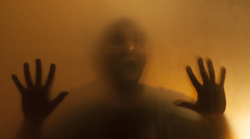



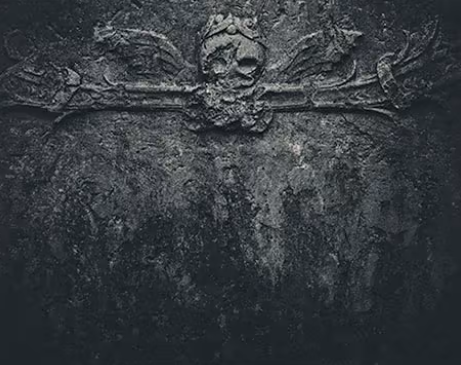
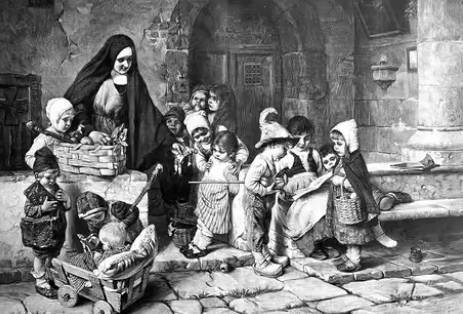
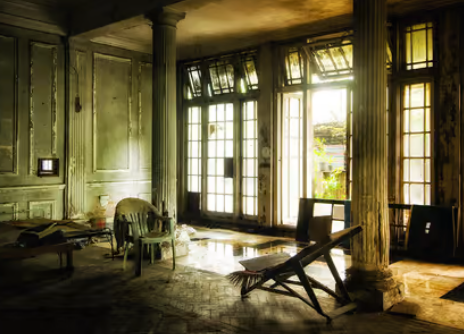
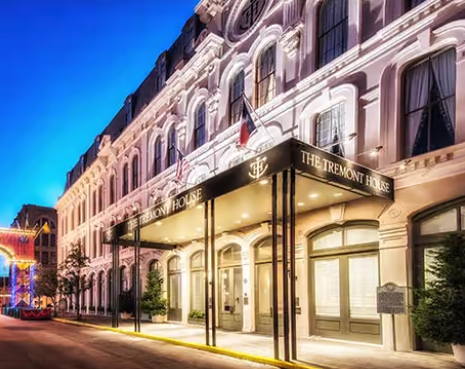

 RSS Feed
RSS Feed